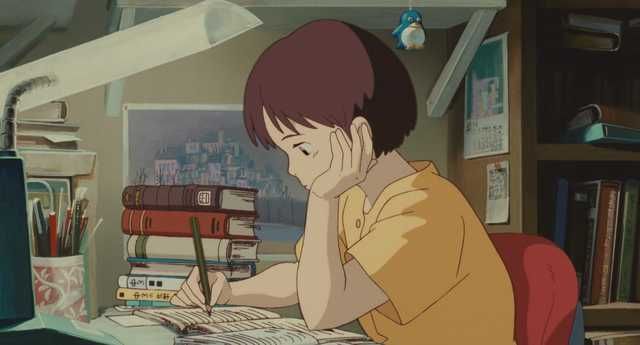
A brief history of the Lofi Girl, the melancholic icon of the Gen Z Death and resurrection of one of the web's leading myths
Yesterday, in the space of about forty-eight hours, one of the most intense and quickly resolved dramas in web history unfolded on Twitter: someone tried to have Lofi Girl removed from YouTube. Last July 10, the Twitter account behind the music livestream that has been going on for seven years had announced that the 668 million-views video had been removed due to copyright violations claimed by a mysterious Malaysian company named FMC Music Sdn Bhd Malaysia. The "copyright strike" is a kind of very serious official warning from YouTube whose next level is the removal of the channel. Of course shortly after the news spread both Twitter and Reddit literally went up in flames with users from halfway around the world mourning the demise of the historic channel. Then yesterday the YouTube team itself had to step in, announcing that the copyright infringement allegations were invalid, that the channel of the person who reported Lofi Girl was fake and had been terminated. At the moment the stream is still unavailable (at least from Italy) but should be back up and running in the next couple of days. Those who were ringing mourning bells for Lofi Girl can stop: it is not over yet. The speed with which the news spread, however, and the iconic status achieved by the Lofi Girl "character" especially in the post-pandemic have brought us back to her origins and transformations. How did the Lofi Girl come into being?
The lofi radios have been taken down because of false copyright strikes, hopefully @YouTubeCreators @YouTube will sort this quickly... pic.twitter.com/X01hL6jT2N
— Lofi Girl (@lofigirl) July 10, 2022
When the channel was born in March 2015, it was officially called ChilledCow and was opened by a 27-year-old Frenchman living near Paris known only as Dimitri (he asked to remain anonymous when The New York Times contacted him about his radio station) who started the first livestream in February 2017. Initially, the character featured in the looping video that has been going on for years was not the Lofi Girl we know but an excerpt from a 1995 Studio Ghibli film called Whispers of the Heart, directed by Yoshifumi Kondō and written by Hayao Miyazaki. The scene in question depicts the film's protagonist Shizuku who is not really studying but writing her first novel. The channel's popularity created problems with the owners of the rights to the film, who briefly managed to discontinue the channel in August 2017. Between that date and March 2018, Lofi Girl's identity changed once again, briefly taking on the guise of a character from Mamoru Hosoda's anime film Wolf Children.
But again the studio that owned the rights to the film, Studio Chizu, managed to create problems by leading Dimitri to create his own character by looking for artists who could draw him. So it was that, in September 2018, Colombian artist Juan Pablo Machado, who was in Lyon to study, took up the call and drew the character of Jade, that's her name. «At first he had to lie down in the chair, look up and then return to the starting position, but it was too long to animate, so we kept it simple. I had left the window black to save time», Machad told ActuLyon a few years ago. Then came the idea to animate the video by having the sky outside the window change according to different times of the day. «Dovevo disegnare un paesaggio diurno attraverso la sua finestra e non ne avevo idea di cosa fare». Inspiration was at hand: the landscape seen in the background of Lofi Girl's video is in fact none other than Lyon itself and specifically the Croix-Rousse hill with the bell tower of the Bon-Pasteur church. When the popularity of Lofi Girl became something mythological, with the pandemic, the character "went out" of the canon of her room becoming the protagonist of memes and especially undergoing modifications to become (even in the form of parody) a nationalized version of herself according to different countries and thus we had the Italian Lofi Girl, the English Lofi Girl, the Korean Lofi Girl, and so on.
@orangeandre Shes the most prepared honestly #lofi #lofigirl #PrimeDayDreamDeals original sound - Andre from Victorious
The rest is history. On March 18, 2021, the channel was rebranded to mark its sixth anniversary, taking on the official name of Lofi Girl and officially establishing the iconic status achieved by Machado's character. The transition from pop character to cultural icon came precisely with the pandemic: in those difficult days, where YouTube was the last window on the world and where many found themselves spending long hours in solitude, perhaps even working from home, Lofi Girl represented not only companionship but also an example of stoicism and resignation. Helping this portrayal was the girl's melancholy air: the clutter of the desk and bookcase behind her, the apparent boredom of the cat gazing disconsolately at the distant rooftops, the plant languishing among the abandoned books, the summer light that seems strangely distant - remoteness heightened by the girl's heavy headphones that accentuate her air of isolation, of sweet and quiet sadness or perhaps boredom. In our lockdown loneliness, we have collectively projected so many of our feelings onto that silent, ever-present (but also always lonely) character that we have ascribed to her a history and psychology all her own, somewhat like the lonely drinking girl in Renoir's Breakfast of the Rowers.
Yesterday's events and the imminent resurrection of the Lofi Girl show how, confusing and disorienting as it is, even our age needs its icons and knows how to find them as and where it can. The iconicity of the girl studying at the window, however, is something more subtle and nuanced, as the character does not serve to sell products or promote messages of any kind-she is literally a taciturn companion, a friend with whom to listen to new music. A friend that, by all accounts, the Internet and its people still cannot do without.

















































